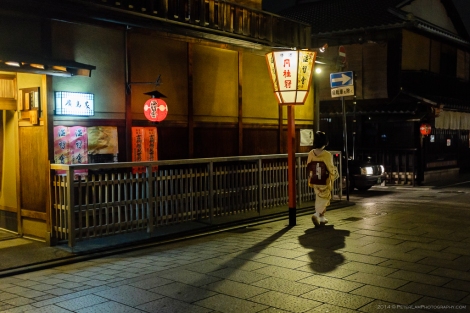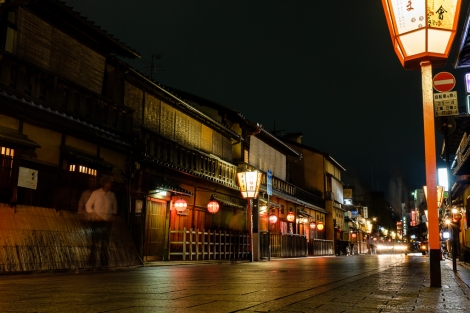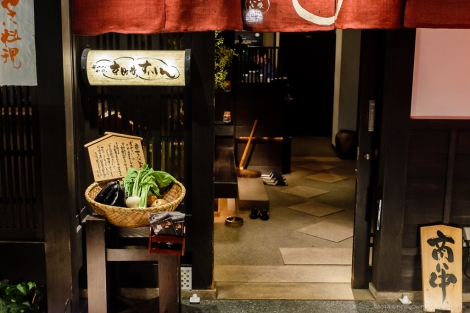Hanamachi, literally “flower town”, is a Japanese geisha district. These areas contain historical okiya geisha houses and ochaya tea houses that are still active today, and provide a glimpse of the country’s rich traditional past. Contrary to popular western belief, a geisha is not a prostitute, and these districts were never red light districts. Geishas are entertainers who act as hostesses, and whose skills in classical Japanese music, dance, arts and conversation take many years to develop and perfect.
During my visit to Kyoto I visited two of the remaining five active hanamachi in the city. The districts in the evening have a very different atmosphere than during the day – there are fewer tourists around, and the soft light from the lanterns seem transport you to a different time. If you’re lucky, you might even spot a geisha making her way through the narrow alleys to her next appointment.
Gion
Gion is probably the most famous of the geisha districts in Japan, and therefore also overrun with tourists. There are many traditional teahouses and hyper-expensive kaiseki restaurants lining the narrow streets. Without a doubt the most exclusive ochaya is Ichiriki Chaya, a 300-year old establishment that was briefly featured in Memoirs of a Geisha. At the end of the main thoroughfare you’ll find Kenninji Temple, one of the five most important Zen Buddhist temples in Kyoto.
Ponto-Cho
Another Kyoto hanamachi is Ponto-Cho, a narrow alleyway that runs parallel to the Kamo River. This easy-to-miss street is packed with restaurants and bars amid traditional teahouses. The atmosphere is more casual here, with a good mix of the old and new, exclusive and casual. Most tourists are probably not aware that this is a working geisha district.























Beautiful dusk shots! I miss Kyoto!
LikeLike
Thank you Celia. I must admit that Kyoto is my favorite city in Japan.
LikeLike